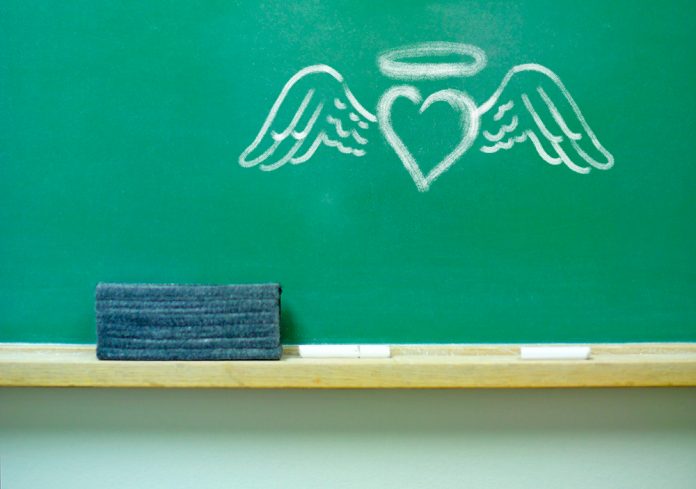
20 creative ways to share the faith
Patti Maguire Armstrong
This is the mission field. That thought hit me early on during my dozen years as a catechist. Not all families attended Sunday Mass, and some of my students’ lack of knowledge about basic lessons had initially caught me off guard. One comment in particular surprised me and forever changed my approach to teaching.
While trying to impress upon fourth graders the immense love that Jesus has for us, I said, “Even though Jesus was God, he suffered and died on the cross for us.”
“Jesus was God?” a boy blurted out. Some of the kids laughed.
“Everyone should feel comfortable asking anything they want here,” I gently reminded the class. Yet the question gave me pause.
“Who thinks Jesus is God?” I asked. My confused student was not alone. Hands went up and down, and finally half stayed down. Most of the students were clearly not sure.
“Jesus was God,” I said. Then I explained the Trinity and that Jesus took on flesh, was born of Mary, and walked among us as both God and man.
The Jesus question
The realization that so many of my fourth-grade students did not know — or at least were not confident in the fact — that Jesus was the Son of God revealed a big hole in their education. After all, these students had already made their first Holy Communion. That hole needed to be filled if they were to grasp even a basic understanding of the Catholic faith.
From that point on, at the beginning of each school year, I asked my class if they thought Jesus was God. Every year the response was the same — about half and half. The year that I taught seventh grade, I expected a better response. In fact, I would have bet on it. And I would have lost. Again, half did not know Jesus was God.
Without that understanding, what sense did the Gospels make? Or the Eucharist? Or the entire Catholic faith?
Several years before I taught seventh graders, I had written a letter to our pastor and director of religious education reflecting on faith formation being a mission field. I expressed a desire that we address it as such and perhaps gather to pray together for the students and families before every class, or at least at the beginning of the year. Eventually, parish leadership changes brought a stronger resolve to reach students and families — and it brought improvements to our books and programming.
Maximizing our lesson
Regardless of the level of support a catechist receives, teachers stand alone in the classroom. What matters most is if students are being drawn deeper into the faith in both understanding of and relationship with God. My one hour a week with students was a sacred calling. If I just showed up, went through the lesson, and returned home, my job would have been completed. But as a call to serve God, I needed to go deeper. Yet how much can a person reasonably do to impact lives in just one hour?
If I just showed up, went through the lesson, and returned home, my job would have been completed. But as a call to serve God, I needed to go deeper.
Through prayer and contemplation, I came up with simple ways to maximize my time — striving to enliven class time for my students and even reach families. My knack for creative ideas and expanding my time (having 10 children helps) assisted me in the classroom and eventually led to my recently published book, Holy Hacks: Everyday Ways to Live Your Faith and Get to Heaven. It takes the idea of the popular “life hacks” and translates it to include eternal life. Holy hacks — just like secular life hacks — employ clever solutions and open up new opportunities.
As a catechist, I did not call my ideas “hacks” at the time, but that is exactly what they were: creative ways to share the faith. Teachers are in a position to introduce students to the Catholic faith beyond mere book learning. An hour a week is all the time we are given, but we can increase the capacity for what is possible with these simple ideas.
20 holy hacks
1. Develop a relationship with saints who were catechists, such as St. John Bosco and St. Elizabeth Ann Seton. Ask them to pray for your students that they will be inspired by God.
2. Pray to Our Lady of Good Help. Under that title, the Blessed Mother appeared in Champion, Wisconsin, more than 150 years ago to young Adele Brise. Mary instructed Adele to teach children the faith. This is the only Church-approved Marian apparition in the U.S.
3. Look for a lesson about the Eucharist to inform students about some of the amazing Eucharistic miracles throughout history. Get a book about them or do an internet search to read up on them.
4. Update parents with letters or emails about what their child is doing in class as a way to engage them, too. For instance, I told parents that the kids were extremely interested in the Miracle of Lanciano and shared websites they could visit together to see pictures and learn more. Encapsulating your lessons may be catechizing the whole family.
5. Invite other teachers to meet you at church before or after class to pray for students and their families.
6. Pray the Rosary for your students and their families at least once a week.
7. Tell the story of the Miraculous Medal and teach students the prayer “O Mary, conceived without sin, pray for us who have recourse to thee.” You can enroll students for 25 cents a year or one dollar for five years for Masses with the Association of the Miraculous Medal (go to AMM.org). Each enrollment comes with a medal and a card that explain’s the medal’s story. I bought inexpensive chains for the medals and handed them out with the cards at Christmas.
8. Speaking of Christmas, there are many Catholic organizations that allow you to enroll students or families in a year of Masses or for a Christmas novena. Here are some suggestions:
◗ The Passionists
◗ Capuchin Mission/Seraphic Mass Association
◗ The Assumptionists, the sponsors of Catechist magazine
9. Find some beautiful holy cards with a short prayer on the back to hand out to the students.
10. Toward the end of class, I often split the class into two teams to play a Family Feud-style game using questions from the day’s lesson. To get students to pay attention during the lesson, I’d often give hints about what might show up in the game. It makes learning fun and memorable. Tip: Just play for fun, not prizes.
11. To make faith real and exciting, I often read stories from the Amazing Grace for the Catholic Heart book. It is full of 101 Chicken Soup-like Catholic stories. Students love it and beg me to read from the book, time permitting.
12. Offer up your drive time and pray for your students on your way to teach them.
13. Assign students a day of the month that you dedicate to offering prayers and sacrifices for them. Let the students know which day is their day. It will make them feel special.
My one hour a week with students was a sacred calling.
14. Ask students to make a commitment to start and end each day with some sort of prayer, even just telling God good morning or good night and asking him to help them in everything they do. Tell them it’s something easy they can do their whole life.
15. Introduce students to some of the saints throughout the year, such as the saint of the day.
16. Read the upcoming Sunday Gospel at the beginning of class so it will sound familiar at Mass.
17. Pray a Rosary during one class so they will have that experience.
18. Don’t skip over the little things. Repetition and pointing out simple teachings are often more necessary than you think.
19. Ask the students to pray for you and tell them you will be praying for them.
20. Put time in before the Blessed Sacrament so God can fill you up and spiritually maximize your time.
It is important not to pressure yourself to give students everything they are ever going to need, all in one year. We know that would be impossible and silly to think, but it’s easy to feel pressured that we are not doing enough.
The key, of course, is to do our best in all things and ask God to send the Holy Spirit in all our encounters with others. It is the Holy Spirit who gives us the words and opens hearts to receive them. And through him, with him, and in him, God will multiply our time and make every moment count.
PATTI MAGUIRE ARMSTRONG is the mother of 10 and was a catechist for 12 years. An award-winning author, journalist, and blogger, she edited and co-authored Ascension Press’ Amazing Grace series. Her latest book is Holy Hacks: Everyday Ways to Live Your Faith and Get to Heaven.
Image credit: CAROLINA K. SMITH MD/SHUTTERSTOCK
This article was originally published in Catechist, March 2020.




